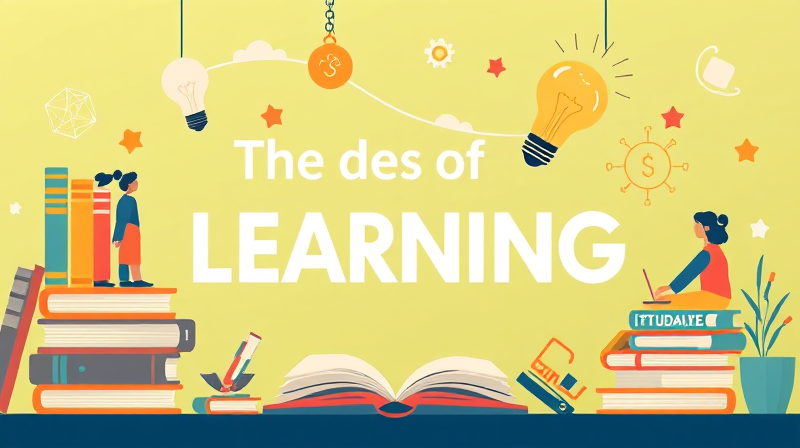In the dynamic world of today, acquiring a new language from the comfort of your home is more than just a distant dream—it is a vibrant and achievable reality. With the rise of innovative technologies and flexible learning tools, anyone can unlock the door to a new culture and better career prospects by simply dedicating time to your studies. This article is designed to serve as a roadmap for beginners, offering practical and inspirational advice to help you navigate the exciting process of language learning.
Learning a new language opens countless opportunities, whether you plan to travel someday, communicate with new friends, or enhance your professional skills. By committing to the journey of language acquisition, you are not only expanding your linguistic abilities, but you are also growing your capacity to understand new cultures and perspectives. This personal growth can lead to a richer, more connected life.
Setting Goals and Creating a Study Plan
The first step in your language learning journey is to set clear, specific, and manageable goals. Instead of overwhelming yourself with the thought of fluency right away, break your aspirations down into bite-sized milestones. For instance, decide to learn a handful of new words each week or to practice speaking for five minutes daily. This approach helps in building confidence and instills a habit of consistency that is crucial for long-term success.
Once you have your goals in place, it’s important to create a flexible study plan. Consider incorporating a weekly reset routine where you evaluate your progress and adjust your practice sessions accordingly. A well-structured plan that allows for regular review and focused learning will enable you to steadily build your skills in a balanced manner.
Remember that learning a language is not a linear process. There will be moments that might seem challenging, but each step taken is a valuable part of your growth. Keeping a positive attitude and celebrating small victories will continually motivate you to push through any obstacles.
Integrating Language Into Your Daily Routine
One effective strategy to enhance language retention is by integrating the new language into your daily routine. This practical immersion can be achieved in several inventive ways:
- Listen to podcasts in the target language while engaging in activities like cooking or taking walks. The background exposure to authentic language use reinforces your auditory comprehension.
- Watch movies and TV shows with subtitles that match your learning language. This method not only improves your listening skills but also helps you understand the context and cultural nuances of the language.
- Create simple content such as to-do lists or journal entries in the new language. Writing regularly, even in small amounts, enhances your vocabulary and understanding of sentence structures.
This form of contextual practice is instrumental in shifting your mind from theoretical learning to a more natural usage of the language. When these practices become part of your daily life, language learning transforms from a chore to an enjoyable exploration.
Leveraging Modern Tools and Techniques
The digital age offers an abundance of resources that make language learning more accessible and fun than ever before. Utilizing language-learning apps can provide structured lessons, interactive exercises, and real-time feedback. Popular platforms often incorporate gamification, which makes the learning process engaging through challenges and rewards. This gamified approach not only boosts motivation but also reinforces memory retention.
You might consider using tools that are designed around comprehensible input—a technique where you expose yourself to language content that is slightly above your current level of understanding. Through this gradual increment in difficulty, your brain adapts naturally and internalizes language patterns. Similarly, integrating methods like active recall, which involves regularly testing yourself on what you’ve learned, along with spaced repetition, can significantly enhance your retention of vocabulary and phrases.
These innovative techniques are backed by modern research and align perfectly with the flexibility required by distance learning environments. As a result, you have a personalized curriculum that fits your pace and style, maximizing both efficiency and enjoyment.
The Power of Conversation and Real-Life Practice
While structured lessons and apps provide a strong foundation, nothing beats the power of real-time conversation. Engaging in discussions with native speakers or fellow learners through online communities and language exchange programs offers an irreplaceable immersive experience. These interactions provide immediate feedback and help in overcoming the fear of speaking in a new language.
Regular conversation practice develops your fluency and builds your confidence. It is through these exchanges that you begin to understand the subtle nuances of the language, from colloquial expressions to cultural idioms. Embracing every opportunity to converse is key to mastering the practical aspects of language.
Remember that every conversation, no matter how brief, serves as a stepping stone towards fluency. With every dialogue, your skills improve and your comfort with the language grows exponentially.
Ultimately, learning a new language without leaving your home is not just about mastering grammar or vocabulary; it’s a holistic journey of self-improvement and cultural exploration. By setting clear goals, integrating learning into your everyday routine, leveraging modern tools, and engaging in real conversations, you create a personalized and inspiring language adventure.
Keep your passion alive, embrace challenges, and celebrate progress, no matter how small. Your journey into the world of foreign tongues is a testament to your willingness to explore and grow. With consistency and effort, the language you once found mysterious will soon become a powerful tool in connecting you to a wider, vibrant community of speakers worldwide.








